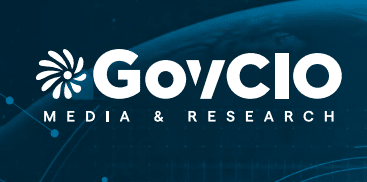Blog: Strategic Portfolio Management Drives Mission-Ready IT for Government

Strategic portfolio management (SPM) is the ongoing process that focuses and aligns government IT resources with overall mission goals. It is essentially a culmination of several disciplines.
These disciplines include strategy management, program portfolio management, data integration, integrated IT portfolio analysis, Lean portfolio management, and agile financial management.
Combined all together, SPM offers a comprehensive and strategic perspective of all interrelated IT activities that can drive more mission-ready digital government modernization efforts for government.
We recently sat down with Jeff Chancellor, Principal Systems Engineer, Software AG Government Solutions, who broke down everything you need to know about SPM and government.
Q: From a high-level, please tell us what Strategic Portfolio Management (SPM) is and why it’s gaining traction in the government arena.
Jeff: The main difference between strategic portfolio management and traditional IT portfolio management is that it takes a comprehensive look at what is being done across an agency or the enterprise from a top-down perspective.
It helps to put into focus questions such as: “What do we do as our mission?” “What are our goals and objectives?” and “What are our most important initiatives this upcoming year?” From there, you develop a model to answer these questions and make the model accessible for everyone.
Essentially, the purpose of SPM is to connect all IT disciplines – whether it’s application development, process modernization or data management – back to the strategic goals. SPM is all about connecting your business strategies through your content to IT strategies (in other words Connect All the Dots)
Q: Tell us about how business and IT strategy are different, and how should agencies consider these in their SPM journeys.
Jeff: Well, that is always a great question, and let me just start on the IT side. IT strategy is all about taking advantage of the best possible technologies for the best possible outcomes for operational activities and procedures that are automated.
Business strategy is about being flawless in business execution, whether it’s delivering benefits to constituents, doing research on advanced medical devices, or even exploring new customer experience (CX) strategies to meet citizen needs.
Linking both business and IT strategies is critical for addressing any gaps in your mission in ways that can continually be adjusted and prioritized. It also aligns both sides to be able to overcome any innovation gaps and anticipate new technologies that can further advance the mission.
Q: How does API management play into this? And tell us about the three approaches (i.e., Data Driven, Protocol Driven, and Security Driven).
Jeff: API strategy is about taking assets, especially automated assets, and making them accessible in a common, consistent and a secure way. For example, an API can simplify how people and other systems get access to a particular asset.
By being data-driven, it is possible to put an API in front of your key business data. This could be your customer base and their orders. It might be the critical benefits for citizens. Data that is considered sensitive is handled by the API for ensuring security policies prevent unauthorized access.
Being protocol-driven means that you’re going to take the legacy, custom-built interfaces, point-to-point interfaces, and then transfer them to an industry-compatible standard, such as REST APIs. This simplifies how you connect the applications together. It allows agencies to replace legacy approaches with new widely used and understood approaches. Most developers are now familiar with REST APIs.
Of course, security-driven is all about having all APIs being secured and fortified against cybersecurity threats. Often answering the needs of the CISO, this is basically putting a gate in front of an API to ensure that the requester is authorized to actually use the API.
Q: As more devices are being connected these days, how does IoT play into this in terms of documenting how operational data can impact business strategies, goals and objectives?
Jeff: In many ways, IoT is the modernization of the good old RFID or UPC tags. For example, when freight moves through FedEx, it helps to track the location of packages by using scanned barcodes. IoT really takes things to the next level by fully automating not only how the packages are shipped, but also how do devices load packages onto the trucks and shipping containers, and beyond.
There’s often an astounding amount of data being collected by IoT, and it is very well suited for optimizing the business outcomes. IoT encompasses all connected devices, from the shop floor to employees wearing connected devices. Essentially, IoT turns data into measurement to help assess overall effectiveness. It really drives a higher-level of automation throughout the enterprise.
In addition, we have brought some great examples of IoT to life for government. For example, Department of Defense (DoD) originally used our Cumulocity IoT platform for contact tracing during the COVID-19 pandemic.
Q: Why should planning for modernizing existing solutions and capabilities go far beyond the obvious cloud migrations (i.e., also focus on evolving technologies and yet to be imaged technologies)?
Jeff: Planning is all about what’s coming in the future. I’ve been around long enough to see many organizations use tactical planning for developing incremental improvements overall around a two-year period.
However, if you take a more visionary role in planning, it’s best to look ahead at what the innovation landscape will be like in, say, 5 to 10 years. This kind of future insight can help foresee a more complete vision for modernizing existing technologies.
For example, if the vision is to move something out of the data center into the cloud, it’s possible to do a lift-and-shift. But, if you don’t improve on what’s happening in the cloud, you will just have the same operational footprint on a modern platform. As such, modernization is much more than just moving to the cloud. It should be more about architecting for the cloud and optimizing for better cloud operations.
Q: How can agencies best prepare themselves to pursue emerging technologies, and how can they qualify and quantify their benefits?
Jeff: I think that they can best prepare themselves by starting to think strategically. If they have a couple of internal visionaries on staff, then it’s possible to think about strategic improvements, and ask themselves questions like: “What if we had something that could improve this process or effort?”
The pace of innovation is continually accelerating, and not showing signs of slowing down.
To think about the longer term of technology requires you to imagine things that simply don’t exist now. You have to be able to think “what if” without any boundaries or constraints.
Q: Along these lines, how can agencies train their staffs, as well as attract new talent, to be prepared for these new technologies?
Jeff: The hardest part of being prepared for tomorrow is training for tomorrow in the present. There’s also the challenge transferring knowledge from the baby boomer workforce that is aging out and getting ready for retirement to the new generations.
We have to remember that sometimes the fundamentals of solving business problems have not changed so much, but the manner and speed of realizing the solutions have changed considerably.
While there will be a loss of corporate knowledge, the younger generations are bringing new knowledge around cutting-edge digital innovations. The key for attracting this younger talent is to give them the freedom to explore new technologies, while giving them a work environment – say working from home – that is ideal for them.
It’s also important not to confuse talent with skills. Talent is that innate behavior that we have as individuals and drives our ability to learn. Skills are the techniques that can be taught and picked up along the way as lessons learned.
Q: How can agencies document and assess their overall modernization programs?
Jeff: It’s all about keeping track of what you’re trying to modernize and why. When developing the overall strategy, goals and objectives, it’s important to always track back all efforts to meet a mission-driven strategy.
Q: Finally, please tell us about Software AG Government Solutions’ “built for government” SPM offering.
Jeff: Our core offering for SPM is our Alfabet platform. It offers a broad purview into the business and IT landscape, across the entire enterprise architecture – meaning that business assets are connected to other more technical assets.
Our “built for government” solutions enable the enterprise teams, the contributors and subject matter experts to all collaborate in a single repository. This allows them to provide their knowledge and their data into the repository, and connect it together for answering important strategic and modernization questions.
We have also taken steps along the way to include more information attributes to meet the modernization needs of government.
For example, tracking when applications or capabilities are moved to the cloud. We have also included the familiar reference architecture models that come from the Federal Enterprise Architecture Framework, as well as including support for Technology Business Management financial methodology.
In addition, we have a risk management functionality that has evolved and adjusted over time to integrate with the NIST National Vulnerability Database.
And since SPM data comes from a variety of sources, we enable our Alfabet platform to connect to other systems of record within the government through dedicated connectors and integration adapters.
In all, agencies get the best of capabilities for enterprise architecture management, the best capabilities for IT financial management, and the best of capabilities for aligning with the Federal Enterprise Architecture.
We would like to thank Jeff for sharing his insights with us! To learn more, check out Jeff’s recent DGI 930Gov presentation titled, “Built for Gov: Strengthen Your Strategic Portfolio Management by Prioritizing Impactful Efforts” here.
Want to keep up with all things Software AG Government Solutions?
Share your email address below.

View our upcoming events and on-demand webinars







